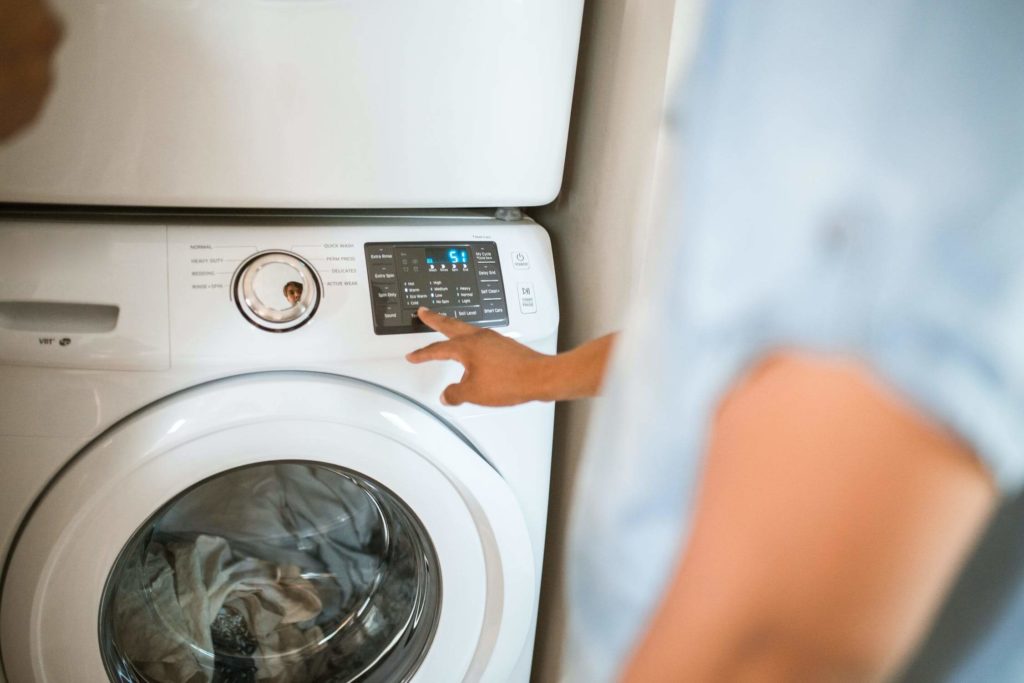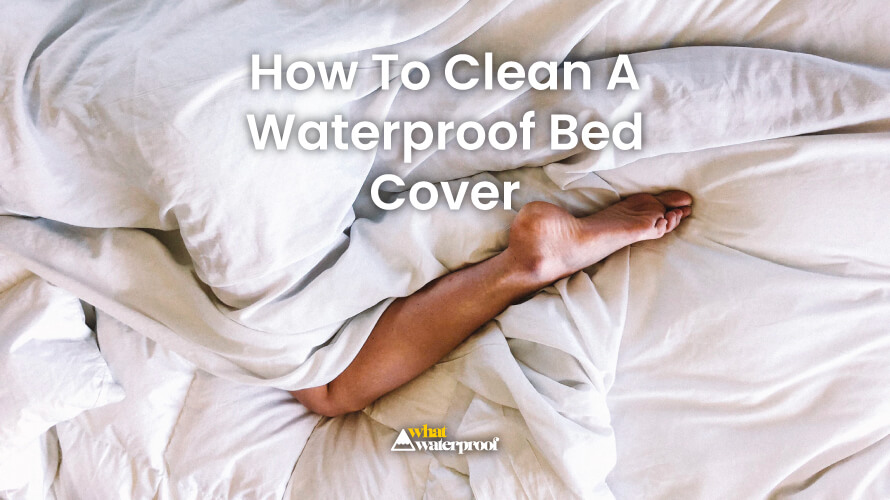Waterproof bed covers (sometimes called mattress protectors) have become an essential part of households with children. They help keep the mattress clean, in turn prolonging its life. More importantly, the covers make clean-up less hectic.
When it comes to small children we can somtimes encounter bed wetting meaning the bed cover needs washing more than normal. You can check out our write up here on the best waterproof bed cover for bed wetters.
But how do you clean the bed cover? Is it safe to throw it in the washing machine like it’s a duvet or a pillowcase?
Or should the covers be cleaned another way?
Let us clear the air for you:
Waterproof bed covers can be machine washed unless stated otherwise by the manufacturer. However, you can only clean these covers on a gentle or low setting and wash them with cold water. After it’s clean, you can either air dry the cover or pop it in the dryer on the low setting.
But what’s the step-by-step process of cleaning a waterproof bed cover?
How do you deal with tough stains? And is the waterproof bed cover unusable if it develops mold?
We answer all that and more in this post.
Table of Contents
How To Wash A Waterproof Mattress Cover?
Cleaning a waterproof mattress cover is a little more complicated than you’d expect:
Check The Seams
The first thing you need to do is look at the mattress cover’s seams and check to see whether they’re open.
Even if your cover is brand new, do not skip this step. If a seam is open, there’s a high chance that the cover will break apart in the washing machine. If you have a plush cover, the feathers, cotton, or other material in the mattress may spill out into the washing machine.
If you find an open seam on your cover, get it repaired by a tailor before you wash it.
Treat The Stains
Next, check for stains, and remove them before throwing the cover into the washing machine.
One easy way of doing it is to moisten the stained area and pour some detergent onto it before letting the detergent soak into the cover for a few minutes. There are some other ways of removing the stains, which you can read about in the next section.

Use The Washing Machine
Place the waterproof bed cover in the washing machine. While you can use the same detergent you use to clean your bed sheets and pillowcases, we recommend using an eco-friendly equivalent. Make sure the washer is set to low, or it’s equivalent setting like gentle or delicate.
Also, ensure you use cold water to wash the cover since waterproof bed covers are susceptible to deformation and break apart easily. Do not set the temperature too high or use a harsh detergent.
If you have a larger bed, you can optionally let the cycle run a second time without any detergent to rinse the bed cover.
Dry The Cover
The best way to dry a waterproof mattress cover is to pop it in the dryer and throw in some dryer balls. The dryer balls help the cover dry quicker and also prevent the material from clumping up. If you don’t have dryer balls, you can throw a dry towel in instead.
Tumble dry on low heat, and if it’s humid, you can turn the heat up to medium if the manufacturer permits.
If you prefer having your cover smelling great when it comes out of the dryer, you could add a drop or two of essential oil to the dryer balls.
Alternatively, you can line dry it – flipping the cover over when it’s dry on one side to ensure that it dries completely. You can also use a combination of both line and machine drying to dry off your waterproof bed cover.
How To Deal With Tough Stains On A Waterproof Bed Cover
Most mattress covers you find in the market have a vinyl backing that acts as a barrier and protects the mattress. The worst thing you can do is not clean it up as soon as you notice an accident – this is what leads to stains setting in.
However, if you’ve found that your waterproof bed cover does have a stain, don’t panic. With the right solution, you can remove challenging stains with ease.
But stain treatments are harsh and can damage the material. So, here are some alternative ways you can get rid of tough stains:
- Pre-treat the stain by applying laundry detergent to the area and letting it soak for a few minutes. You can also gently scrub the stain before popping the cover
- into the washer. Dish soap does an excellent job of removing grease stains from bedsheets and bed covers.
- If there’s a bloodstain on the cover, use hydrogen peroxide to remove it from the cover. Pour as little of it as you can on the stain – the solution will start to bubble and will take the stain away with it.
- Make a paste by combining baking soda and water (1:1/2 ratio), then apply it to the stained area. Use an old toothbrush and scrub the area.
Regardless of which method you use, there is no need for you to dry the treated area if you’re putting the cover in the washing machine right after treatment.
However, if you do not intend to wash the bed cover after removing the stain, you will need to rinse the stained area with water and dry it before using it. Using a hairdryer on low is an effective way to dry the cover quickly.

Does A Waterproof Bed Cover Become Unusable If It Develops Mold?
No.
High-quality bed covers are made from natural fibers, and prolonged exposure to moisture promotes mold growth. A dark environment and high temperatures increase the chances of mold formation.
While you can still use your bed cover after mold growth, you will need to wash it in hot water to remove it first.
The best way of going about removing the mold is to use a mold-killing solution and let the bed cover wash through two full cycles in the washer.
Here’s how you can use borax detergent to remove mold from your bed cover:
- Put your bed cover in the washing machine and add laundry detergent as usual.
- Take half a cup of borax and dissolve it in hot water.
- After the washing machine fills up, pour the solution into the washing machine.
- Let the washing machine run through.
Using borax detergent is an excellent way of killing mold because it is a natural solution that does not effuse toxic fumes post-treatment.
Alternatively, you can use vinegar to kill the mold on the waterproof bed cover. Vinegar is effective against 82% of mold species, and it also does an excellent job of getting rid of the smell.
You can either soak your bed cover in vinegar or add it to the washing machine to kill the mold. Using both methods is the best way to go about removing the mold.
First, put your cover in a bucket and add two cups of vinegar to it. Fill the bucket with water and let it soak for an hour.
Then, pop the bed cover into the washing machine, and add detergent like usual. Let the washing machine fill with water, then add two cups of vinegar to it.
After the washing machine runs through, line dry your cover, ensuring it is exposed to the sun. The sun helps kill off any remaining mold and has a natural bleaching effect, getting rid of the mold stains.
How Often Should You Clean A Waterproof Bed Cover
You can wash your waterproof bed cover every time you wash your bedsheets – ideally once a week.
—
Remember that it’s always best to use an eco-friendly detergent when washing bed covers since strong solvents can weaken the cover.
Also, ensure that you wash your waterproof mattress cover before using it to soften the material.
Bleaching and using commercial stain removers is a big no-no. You must also never iron or dry clean a waterproof mattress protector since the heat can damage the waterproof membrane.
